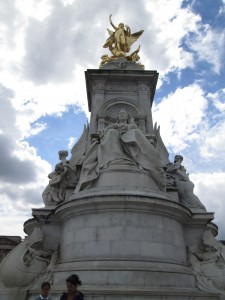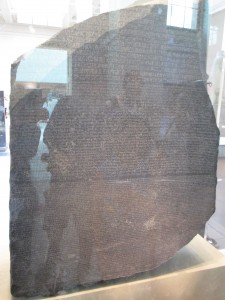1] The Quebec Act of 1774, and the BNA act of 1867 each document the historical ability of Britain, as colonial authority, to accommodate two founding nations in the interest of confederation. Shortly after confederation of the eastern provinces, in 1869, the Metis Nation of Manitoba created a provisional government and attempted to negotiate directly with the new government of the confederationto establish their territories as a province under their leadership. In the end, their leader, Louis Riel was charged with treason – as the CanLit guide puts it, “Canada at the time was not willing to accommodate more than two founding nations.”For this blog assignment, I would like you to outline the reasons why colonial authorities could not conceive of accepting the Metis as a third founding nation. Use the CanLit guide and the summary of Coleman’s argument on the literary project of white civility to substantiate your observations. You might also find part of your answer in The Bush Garden. You should also take into consideration past discussions on ‘the civilizing mission’ of colonialism in Unit 2. Louis Riel also appears in Green Grass Running Water, and accordingly it is worthwhile to do a little outside research around Riel’s provisional government and its attempts to negiciate with the new Canadian government.
———————————————————————————————————————-
For this assignment, I think the best way for me to explore the reasons why colonial authorities did not receive the Metis as a third founding nation is to group my observations within three broad categories, allowing me to contextualize the diverse influences driving policy in Canada at that time. Although I have studied social studies within the Canadian school system (and received 99% on the provincial exam), and have done a lot of research in composing this article, I am wary that I might be repeating common fallacies and stereotypes as taught to me in school or learned through some other medium. Please correct me if that is the case, and I will be happy to make editions to improve everyone’s knowledge about colonialism.
1. There was no tradition of including Indigenous populations within the government of the colonizers or settlers.
To examine this issue, we must attempt to put ourselves within the the shifting cultural milieu over 200 years that operated in tangent with the written policies, the latter having surviving much better in the archives and much more approachable. We have to remember that colonizing powers were not out to make friends with the natives; they were out to make money. In the course of British Empire’s conquest of the world, the local populations of the colonies are always seen as subordinates in Australia, India, and South Africa. The power of the stories about us vs. them are so ingrained in the minds of the public and intellectuals alike that it was more than just about race; even the Irish, who like the Englishmen has white skin and common heritage, were in a sense a colony of the British Empire. However, we must remember that not all colonial powers approached integration of native populations the same way. The French Empire seems to be a remarkable forerunner in racial inclusion, having granted natives of the Four Communes of Senegal full French citizenship and granted the colony deputy representation within the French parliament as early as 1848. These revolutionary ideas about colonization makes us question the difference between Anglo-Saxon and Gallic attitudes, and how Canada might have evolved as a nation if the victors of the Battle of the Plains of Abraham were French. This segues neatly into my second reason.
2. The accommodation of French Canadians wasn’t done in accordance to moral principle; it was a political necessity.
Having successfully driven the French military forces from once and for all, the authorities still have to reconcile the defeat of the French settlers with the reality that the settlers are still here. Since British forces were overextending their limited resources , notions of cultural superiority were superseded by the exigency of maintaining order with minimal military intervention. Appeasing the French settlers by promising them equal status as citizens without renouncing their culture imposed some protection to this significant minority. If there had been more British settlers, I am inclined to believe that the authorities would have denied the French settlers to claims of a founding nation, if they were indeed considered a founding nation. CanLit Guides suggests that the 19th idea of being Canadian to people outside French or British heritage was to assimilate into the British culture, not the French. It took many years before Stephen Harper finally recognized Quebec as a “distinct nation within a unified Canada” in 2006, and even that admission, some would argue, is rather toothless.
3. It was imperative to limit the definition of nationhood so that it can still be meaningful to the young nation and its people.
At the time, Canada was a young nation. Louis Riel’s protest happened in the backdrop of much political uncertainty and turmoil. The United States had just emerged from a civil war five years before Canada’s Confederation. It would not be a wise move for the colonial authorities to mark further divisions along racial lines within the young nation. How many Aboriginal groups would argue that they should be a founding nation if Riel’s provisional government succeeded? Would the authorities then need to grant the Mi’kmaq, the Inuit, the Iroquois, the Coast Salish, and the Haida founding nation statuses and dilute the English and French hegemony? It would have been an improbable proposition in the formative years of an infant nation.
Works cited
Brett, Matthew. “Reflection on the Quebec nation.” Canadian Dimension. Canadian Dimension, 23 June 2010. Web. 26 June 2015. <https://canadiandimension.com/articles/view/web-exclusive-reflections-on-the-quebec-nation>
“Reading and Writing in Canada, A Classroom Guide to Nationalism.” CanLit Guides. Canadian Literature, n.d. Web. 26 June 2015.<http://canlitguides.ca/>


